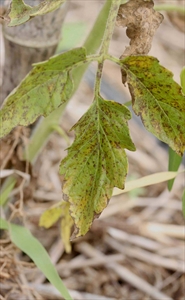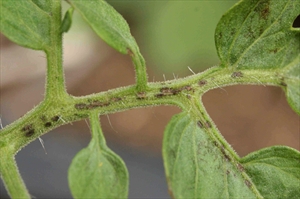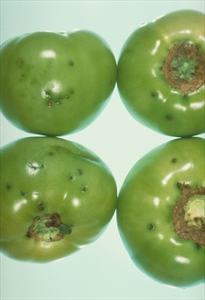- Worldwide distribution. In tropical and temperate countries. On tomato, capsicum, chillies and weeds in the potato family. An important disease.
- Spots are numerous, small (3 mm), sunken on upper surface, slightly raised below, merging at leaf tips and margins. Leaves turn yellow and fall. Spots also on leaf stalks and stems. Fruits infected via wounds.
- Spreads by seed, rain splash, handling wet plants.
- Cultural control: 2-3-year rotation; weed, resistant varieties (capsicum); healthy seed (hot water 50°C 25 mins.) and seedlings; trickle irrigation; mulch; weed; collect and burn trash after harvest.
- Chemical control: copper or mancozeb at 7-10 day intervals.






